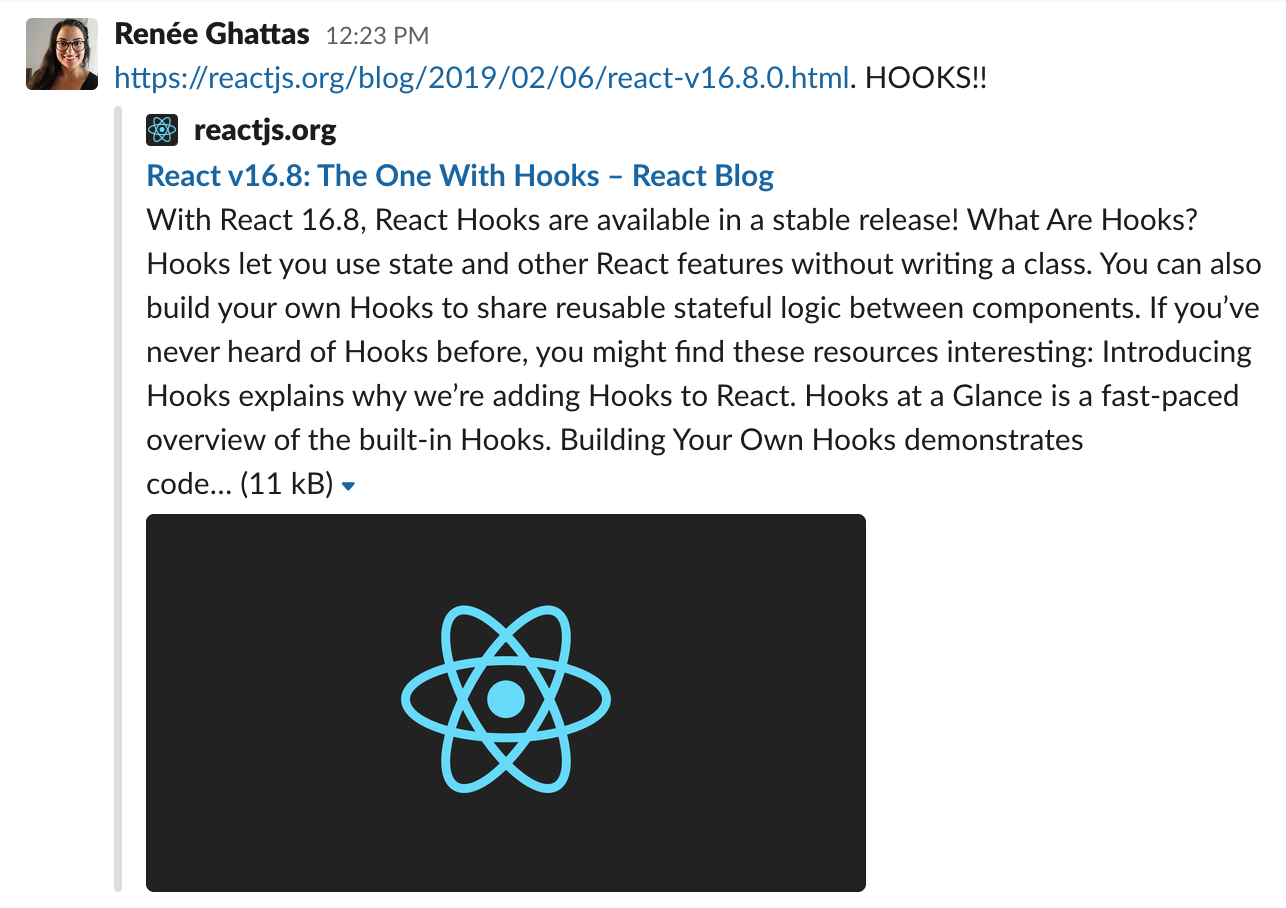Hello 🙋🏻♀️

Renée Ghattas

Software Developer @ Qlik


Sharing Logic across React Components
React Timeline
My React Timeline
November 28, 2017
- First time using React in a professional setting
- First exposure to Higher-order Components (HOCs)

Higher-order Component (HOC)
A higher-order component is a function that takes a component and returns a new component.
// Take in a component as argument WrappedComponent
function simpleHOC(WrappedComponent) {
// And return a new anonymous component
return class extends React.Component{
render() {
return <WrappedComponent {...this.props}/>;
}
}
}Basic example:
Going back to this...

export default connect(mapStateToProps, mapDispatchToProps)(MyFancyComponent)Redux: connect HOC
The connect HOC connects a component to the Redux store.
Negatives of using HOCs
- Changes component hierarchy
<withRedux>
<withAuth>
<withLogging>
<withLayout>
<MyFancyComponent />
</withLayout>
</withLogging>
</withAuth>
</withRedux>- Very verbose
- Hard to debug
- Reordering HOCs can break things
- Prop collisions - HOCs with same prop names
A few months later...
Render props
Render props
- The component just injects functionality without needing to know how it is being applied to the UI.
- Uses a render prop whose value is a function.
import React from 'react';
const SECRET_TO_LIFE = 42;
class ShareSecretToLife extends React.Component {
render() {
return (
<div>
{this.props.render({ secretToLife: SECRET_TO_LIFE })}
</div>
);
}
}
const ShareSecretWithWorld = () => (
<ShareSecretToLife
render={({ secretToLife }) => (
<h1>{secretToLife}</h1>
)}
/>
);Negatives of using Render props
- Nested render props (wrapper hell)
- Can clutter up your render method
- Still pretty verbose
- Makes it difficult to unit test component in isolation
- Pure components: can negate the advantage that comes from using React.PureComponent

February 6, 2019

🤔

Forget everything you've learned about React...
Lol jk.
- Use state and other React features without classes.
- It's just a function.
- Do not change component hierarchy.
- Allows splitting a component into smaller reusable functions (rather than forcing a split based on lifecycle methods).
- LESS CODE!
- Work side-by-side with existing code so you can adopt them gradually.
Hooks (specifically, custom hooks)
Sounds good?
- Easier to compose (static)
- One level of HOC (and you're using class components)
How do you choose?
HOCs:
const page = compose(
withRedux,
withAuth,
withLogging,
withLayout('default'),
);Render props:
- Easier to set up than HOCs
- Dynamic composition
- Less boiler code
- Can use both props and state in render props component.
- You're using class components.
Hooks:
- Should be able to satisfy most needs for reusing component logic. Look here first.
My thoughts...
- I'm a big fan of hooks.
- New projects: Start with hooks.
- Existing projects: Reevaluate your HOC and render prop usage, but don't go crazy.
- Class components, HOCs and render props are not going anywhere.
Going back to this...

import { useSelector, useDispatch } from 'react-redux'
Instead of using connect() HOC...
export default connect(mapStateToProps, mapDispatchToProps)(MyFancyComponent)